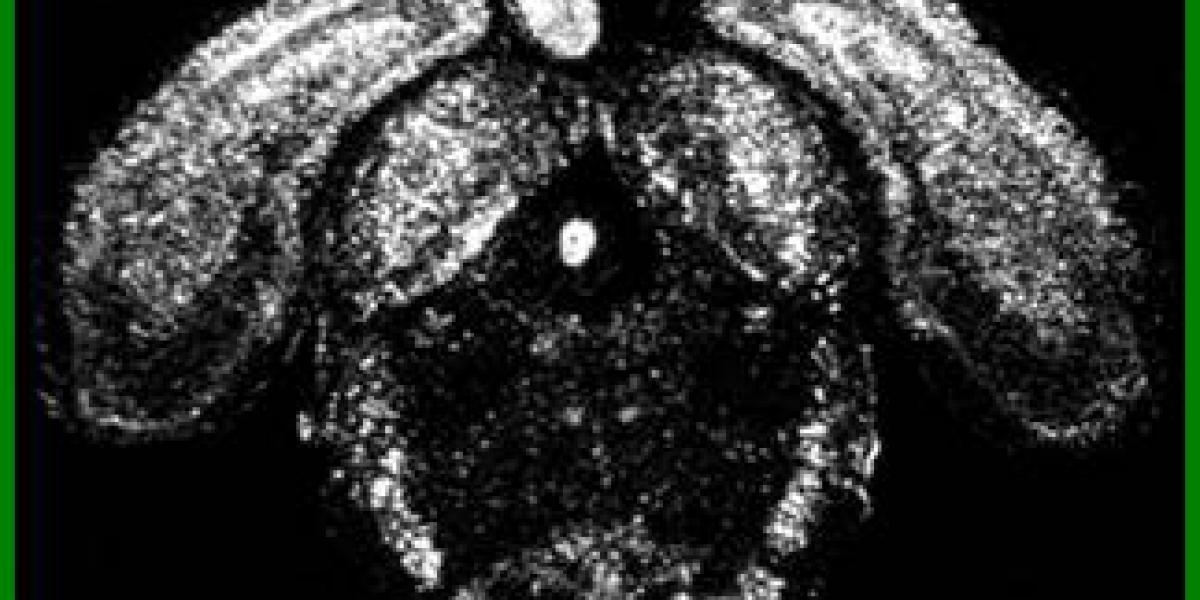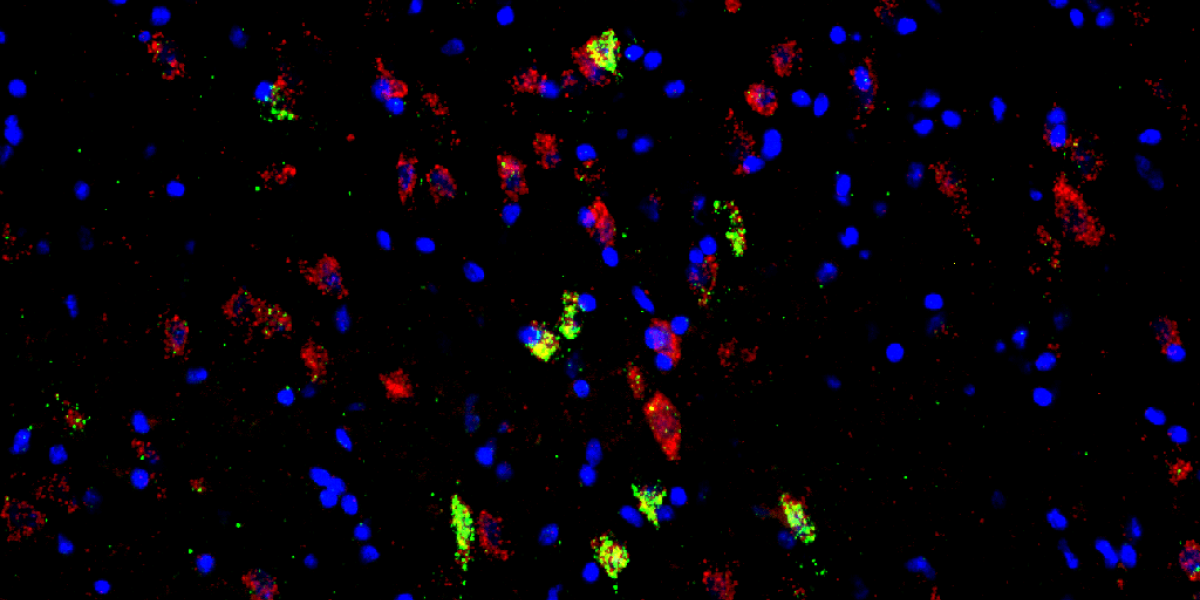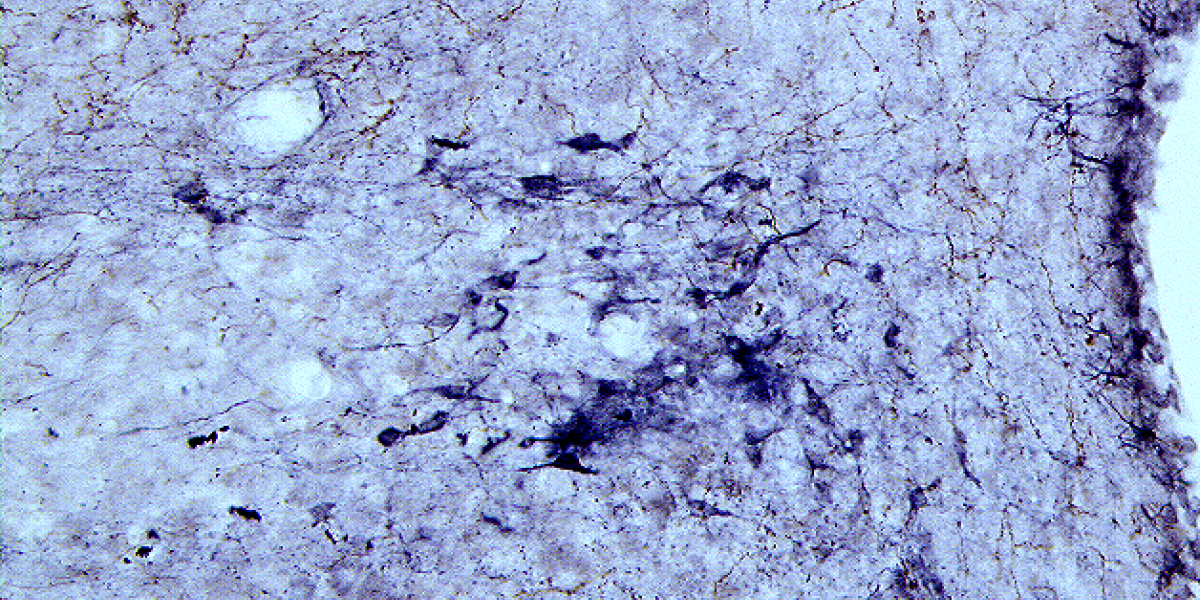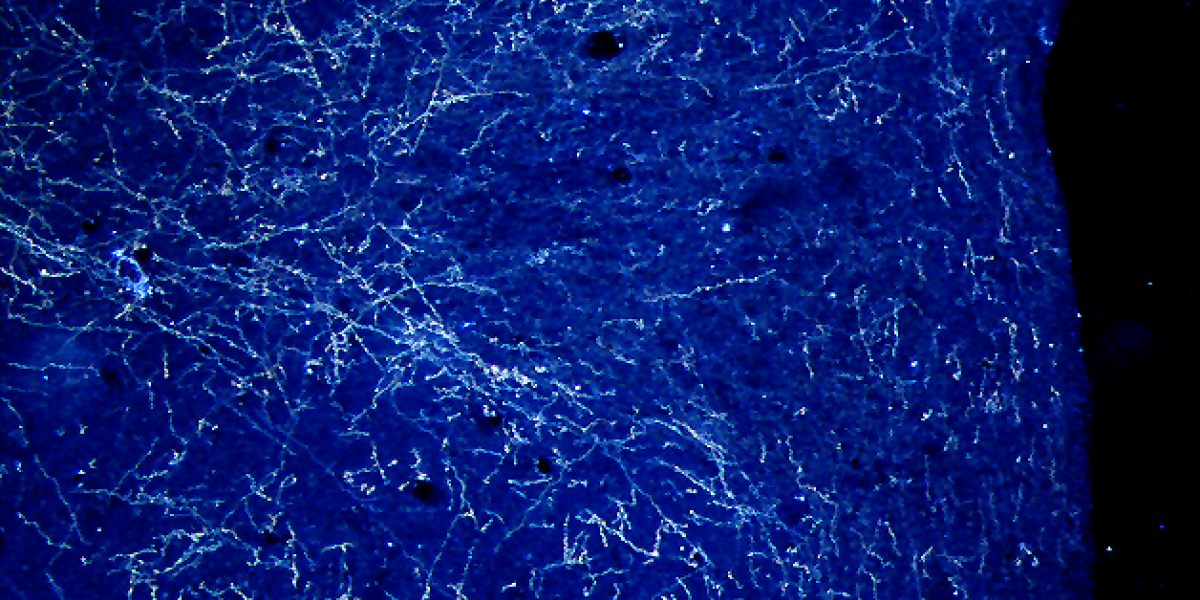Research Methodologies
We employ a variety of molecular, anatomical, cellular, and behavioral techniques to study the ways in which the central nervous system detects and codes challenging environmental stimulation. Many of these techniques help to determine how the brain is modified upon repeated stressful exposures, and how these underlying modifications can further change later behaviors. We have recently begun to employ virally-mediated gene transfer in rat brains to gain better control over circuits of interests, especially at the level of the hypothalamus; techniques such as chemogenetics, and fiber photometry help measure neurotransmitter or calcium release, while neural excitation or inhibition of specific neural phenotypes within regions of interest can be achieved with various intersectional methods.
Neuroanatomical Methods
Neural Activity Methods
Example image of the rostral posterior region of the hypothalamus infected with chemogenic vector AAV2/9-VGlut2-HM4D(Gi)-EGFP






